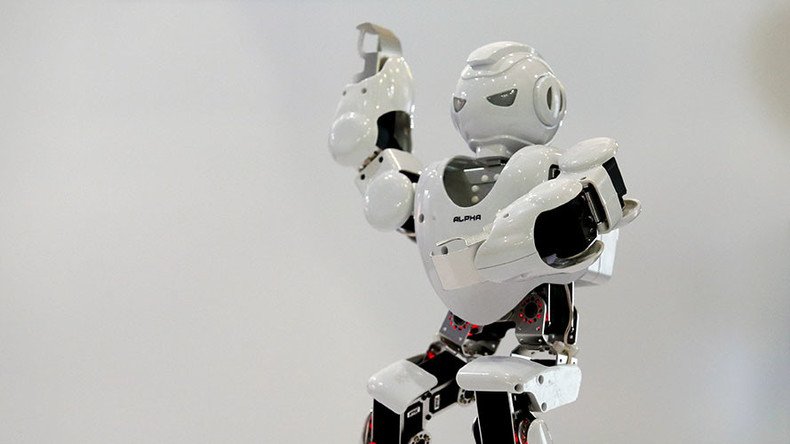Scientists at Bristol University have developed a ‘soft’ robot capable of eating and digesting food for energy. It is also capable of dying and rotting away.
Bristol Robotics Laboratory hopes the aquatic droids, which suck up algae through a mouth made of soft polymer membrane, could be used in environmental clean-ups, according to the Times.
In the long term, engineers could develop the self-sufficient humanoid robots with a skeleton and soft ‘organs’.
The scientists have developed two aquatic robots, one 30cm Row-Bot, modeled on water boatman insects, and a smaller tadpole-type machine, which uses its tail to move around.
“We’ve seen hard robots that can ‘eat’ before, but our robots are much closer to living organisms with a soft mouth and stomach and an animal-type metabolism,” Robotics Professor Jonathan Rossiter said, the Times reported.
“Ultimately, we want to make robots that can eat pollutants, then degrade to nothing when they die. You could launch thousands to tackle an outbreak of algal bloom, for example, and they would leave no trace.”
The team hopes to shrink the tadpole robot to 0.1mm, so they could be sent out as large schools to tackle environmental catastrophes.
One major advantage of soft robots over hard robots is they are able to squeeze into places humans are not able to, such as under glacial lakes or even within the human body itself.
“In the future, robots like this could be released into the ocean to collect garbage. What we are developing is a robot that can act naturally, in a natural environment,” engineer Dr. Hemma Philamore, who worked in the team, said.
The team hopes to use artificial intelligence (AI) technology in the future to make the robots smarter.
Rossiter predicts technology will one day advance to the point where human-like robots are a reality.
“Combined with work on neural networks that can make machines ‘think’ in ways similar to humans, the technology brings the kind of humanoid robots imagined in science fiction a step closer.”
Technology consultant Paul Armstrong added: “This is another step on the long road towards adopting humanoid robotics into everyday life. Form and function must be at the right levels for robots to lose the creepy factor they currently have.”

